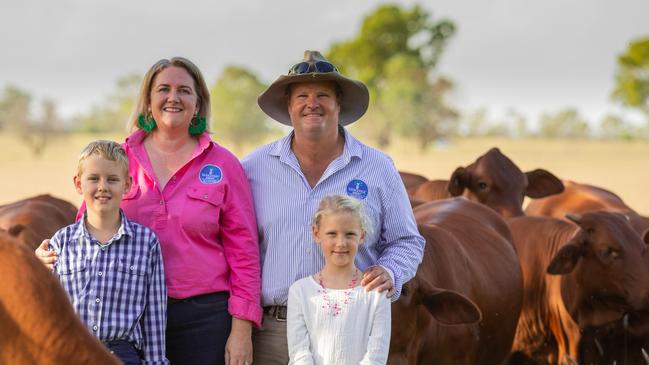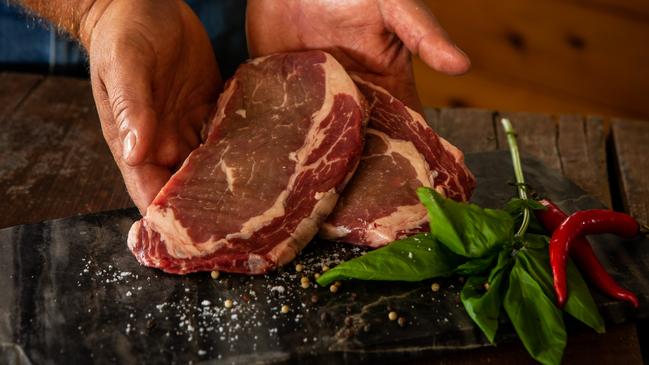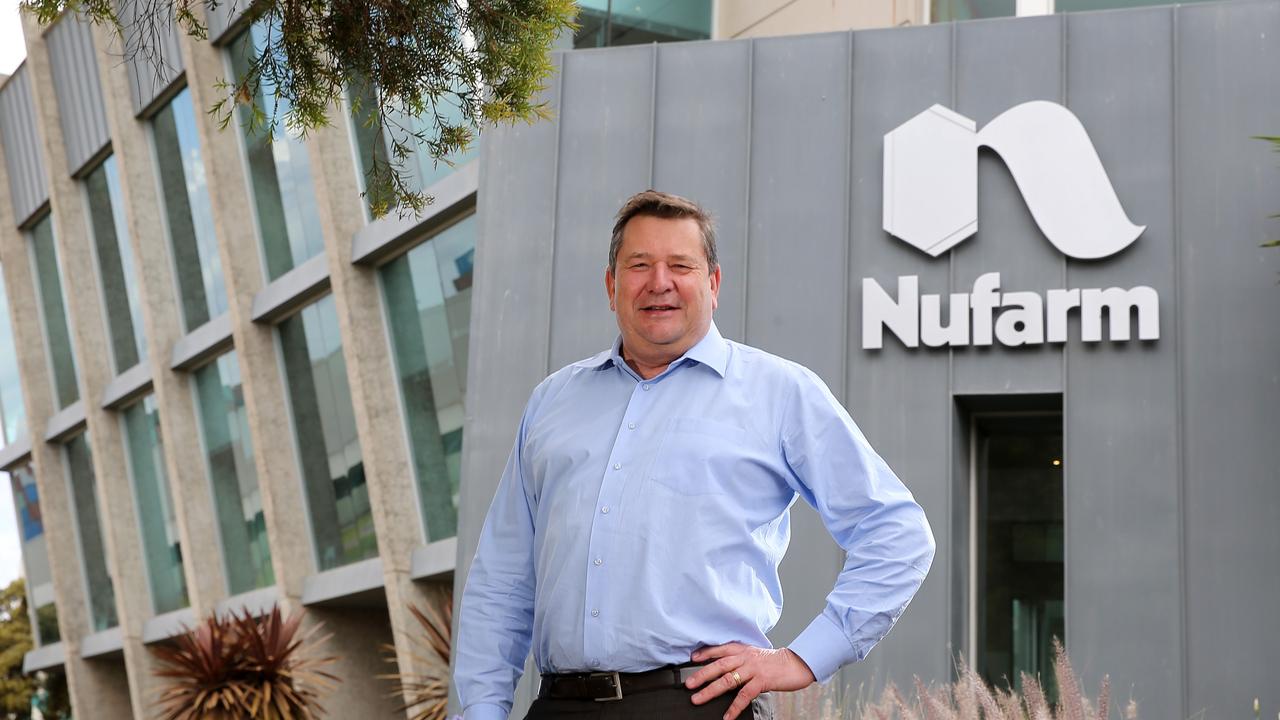Maranoa Beef: The plate to paddock approach to profitability
Bec Beissel’s family has long farmed the land east of Roma. See how they’ve turned their business on its head to add value.

Flipping the traditional paradigm on its head, the Beissel family works in the opposite direction when thinking of their customers.
“Instead of working paddock to plate, we work plate to paddock,” Maranoa Beef owner Bec Beissel says.
“What is it that the customer wants to see on their plate, and how do they want to feel? We start at the plate, working right back to what we need to be doing in the paddock to meet those customer needs.”
For five generations, Bec’s family has farmed the land east of Roma in Queensland and since 2016 has provided a direct farmgate online store where consumers could purchase hampers of fresh beef and lamb.
But the recent addition of a butcher’s store – based five hours away in Warwick – is the next step for the family’s expanding operation, and a move to better cater to their customers and clients.
Bec and her husband Craig, along with their children Beau and Maggie, manage the family’s property, which spans about 744ha.
About 100 Droughtmaster cattle are run across the property, along with 250 Dorper ewes.
The combination works well across the property, and keeps their customers in constant supply of both beef and lamb products.

VARIETY WORKS
Management of country is a top priority for the Beissel family.
The varying nature of the property’s topography works well for both the lamb and beef portions of the operation.
“We have some red loam soils, and some darker, heavier soils,” Bec said. ”Ranging from red loam soils to heavy black soils”
The topography of the property ranges from creek flats to undulating, flatter country.
“The back part of the property is undulating, coming down towards the creek flats, leading to a more flat land. My grandfather used to cultivate that land.”
The varying topography works well for the Beissel family from an animal-management perspective.
“It makes it good to manage the cows and calves on the creek flat-type country, and we have sheep in the flatter, older, more cultivated country. We also alternate and rotational graze,” Bec said.
Pastures across the property are primarily buffel grass.
“It’s an extremely high protein and nutritious grass in our region, and it’s key where live,” Bec says.
Some natural grasses do grow at varying times of the season.
Rainfall in an average year is about 609mm, with the property receiving an above average total of 812mm or 32 inches last year, enough to help boost pasture recovery and regeneration.
Rainfall is vital for the Maranoa Beef operation, Bec says, with no irrigation on the property.
“Our pasture management is very critical, we’re basically grass-growing farmers as much as we are beef and lamb producers,” Bec said.
“The dams in our country don’t hold water very well. The soil seeps, so unless you have regular rain, we rely on bore water significantly. So looking after our artesian basin is extremely important to us.”

SHEEP FIT IN
Adding sheep into the Maranoa Beef enterprise has been a recent move, but one which Bec says has slotted in well.
“We only recently have gone into Dorper sheep — at the moment we’re running about 250 ewes. The wethers from them go into the butcher shop. While the female lambs are kept to increase the herd,” Bec said.
Ewes are joined over a five-to-eight-week period twice a year, resulting in both a spring and autumn lambing.
“That might be a bit unusual for southern states, but here it’s the best time to lamb,” Bec said.
“We tried lambing around Christmas last year but it was way too hot. Because of the heat, we’ve adjusted the lambing time, so both the lambs and the ewes can cope.”
Along with the Doper stock, the Beissel’s run about 100 Droughtmaster cows, with bulls.
Weaner steers and heifers are sold through the butcher shop.
“There’s room to expand on that, but we’re keeping our stocking rates so we can buy in mobs if needed,” Bec said.
“Our own progeny is available to use through the butcher shop. However, due to the market advantages at the moment we sell our weaner steers through the saleyards and our replacement breeder heifers to a high end commercial breeder market.”
Droughtmaster are Bec’s preferred stock for the country they farm.
“They handle the conditions well. At the moment conditions are good, we’ve had a good season. But in the past 10 years we’ve had below-average rainfall,” Bec said.
“The Droughtmasters are good at laying down fat, and as a grass-fed operation that’s important for us. Their fat and their fertility suit us year in year out. The breed offers a high quality eating experience for our customers but also enables us options in the paddock to cross breed”
Genetics are sourced through a handful of studs, including Eversleigh, Wallace Vale and Glen Fosslyn, whom the Beissels have been buying bulls from in recent years.
Breeding numbers in recent years has been reduced due to the impact of drought, from about 500 breeders to 100.
Cattle are joined year-round, guaranteeing supply for the Maranoa butcher store.
“We want to be able to access our cattle all year-round.”
ON ROTATION
Cattle and sheep are kept separate, but each party is kept in one mob and moved through a rotational grazing system.
Rotational grazing is important to the Maranoa Beef enterprise, as is soil regeneration.
“We’ll have no more than 30 per cent pasture taken from each paddock,” Bec says. Once the stock have taken that, we’ll move them onto the next paddock. Because it’s not a big place, we like to move them around regularly, to give that fresh flush of feed to each mob. It’s one important part of our management.”
Every few years, Bec says the family will renovate the soil – depending on the country – and turn the soil over to keep it aerated.
“We have also been looking after our native trees, and also controlling any suckers and timber regrowth,” Bec said.
“That helps us with our pastures, and our environmental stewardship. Since we started doing that, we've had fewer erosion issues, and it’s much better at holding the soil. Grass is far more effective at holding the soil together than trees therefore resulting in no erosion.”
As a fifth-generation producers, sustainability and regeneration is “key” to Bec’s approach to farming.
“We leave corridors of trees, where we now have quite a few koalas,” Bec said.
“We can offer a great protected environment for them, and we feel it’s really important to provide that.”
CLOSING THE GAP
Building a story around their produce – along with fostering strong environmental credential along the way – is central to the Maranoa Beef operation.
Bec said customers were becoming more aware of the provenance and integrity around the food they buy.
“In saying that, Covid has really contributed to people needing to buy meat from wherever they can get it, and there’s been a price point around what they’re prepared to pay,” Bec said.
“There’s more conversation around (provenance), and the butchers have been well supported at the moment … I’d love to see that continued.
“There’s also a lot of work that we in agriculture, and as farmers, have to do with marketing to our customers in a better way, connecting with them at their level.”

Bec and her family are working actively to close the gap between producer and purchaser, with the recent acquisition of a butcher store in Warwick.
“In 2016 we were established as an online platform where people could buy beef in hamper-style packs. We’d get got a butcher to process products for us, then we’d deliver it. Covid-19 affected us massively. We were looking for what could be the next step for the business,” Bec says.
The Beissel family purchased a butchery from a second-generation butcher recently, where they are plan on supplying customers with their own cuts of beef and lamb.
“It will allow us to better connect with our customers,” Bec says.
“We can keep a constant, and quality price point which is really perfect for our customer, and it’s a great next transition.
“That’s how the pieces of the puzzle evolved.
“Like so many other businesses, in the past two years we’ve had to keep reinventing ourselves.”





